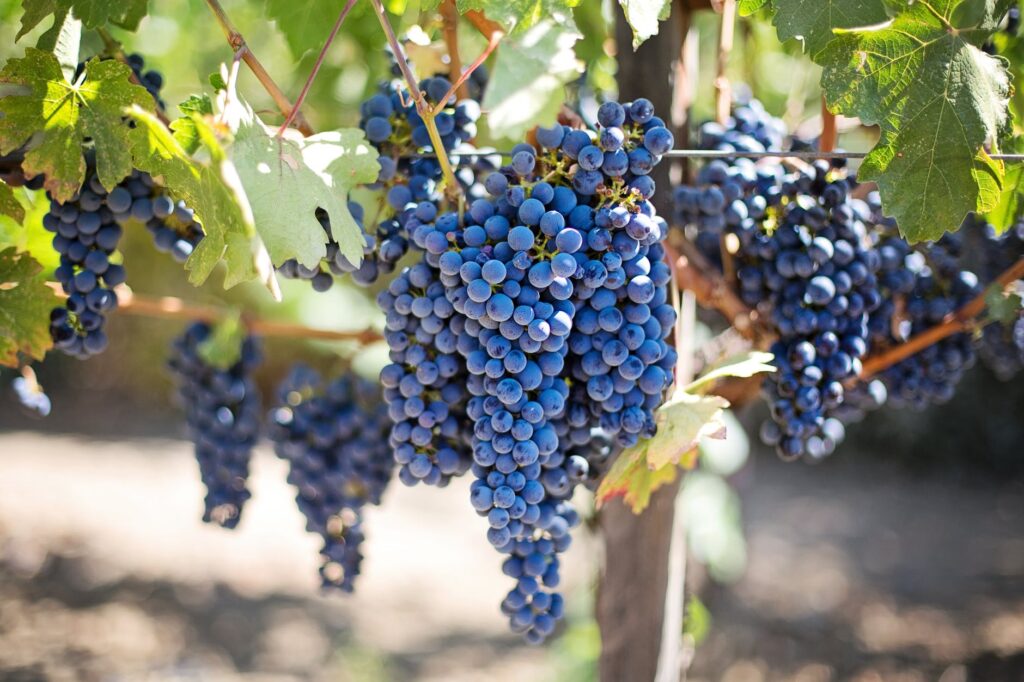What is wine? An alcoholic beverage made with fermented juice from grapes. FUN FACT: The grapes used for wine are different from the grapes you eat. Wine grapes are smaller sweeter and full of seeds as table grapes are bigger, they have more of a crunch, and are seedless.
Each Bottle of Wine Contains:
- 5 glasses of wine
- 6 Different types of Acid
- Malic Acid
- Lactic Acid
- Citric Acid
- Tartaric Acid
- Succinic Acid
- Acetic Acid
- Anthocyanin a blue, violet, or red flavonoid pigment found in plants. ex. some of the earliest carrots were purple because they contained anthocyanin.
- A lot of water
- Alcohol
- Sugar
- and 8 different minerals
- Iron
- nitrogen
- phosphorus
- magnesium
- potassium
- fluoride
- sulfur
- and calcium
Let us Break Down the Calorie Content
Although, A Dry white will have about 460 calories with a 10% ABV (Alcohol By Volume) a Dry Red will have about 600 calories with an 11.5% ABV. Red and White wine with a 13.5% ABV contains about 750 calories, 14% ABV at 820 calories and 21% ABV will run about 1440 calories per glass.
The Vintage Year
Furthermore, you will most of the time find a vintage year on a bottle. This year is the year the grapes were picked and turned into wine. Occasionally you will find a wine without a vintage year listed on the label. This means that it is a blend of several vintages together. In the case of Champagne, you will see on the label NV for Non-Vintage.
Harvest season in Europe and the United States of America is August to September. In the southern Hemisphere like Argentina or Australia harvest season is February to April.
The Different Types
Single-varietal is made primarily with one type of grape commonly named by the grape. For example, a Riesling is made with Riesling Grapes. The % of grapes required to be labeled single-varietal wines is 75% in the USA, Chile, South America, Australia, and Greece. 80% in Argentina and 85% in Italy, France, Germany, Austria, Portugal, Spain, and New Zealand. Where Oregon requires 90% to be a single-varietal wine.
Then you have what they call a wine blend. This is several grape varieties and a traditional wine-making method. Besides, there are several famous blends provided in classic wine-making regions and these are mixed after fermentation and aging are complete.
Blended and Fermented together is a field blend of wine a famous field blend is Port.
Go Here to sign up directly for our Wine of the Month Club!!!
Let’s Talk About Taste
Acidity– the acidic level ranges on the pH scales from as low as 2.5 (a lemon) to as high as 4.5 (greek yogurt) making the taste of wine tart.
Sweetness– It depends on the style but it can range from no sugar all the way to sweet like Maple syrup. So the term dry refers without any sweetness.
Alcohol– the taste of the alcohol is a spicy taste, it coats the pallet and warms the back of the throat. The average bottle of wine is 10% ABV to 15% ABV. However, a Port is fortified with neutral brandy raising it to 20% ABV. A Moscato D’Asti is as low as 5.5% ABV.
Tannin– tannin is found in Reds and contributes to the astringent quality of Red. If you take a wet black tea bag and place it on your tongue that is the taste of tannin.
There you have it, if you are interested in trying some truly fine wines you need to check out our Wine of the Month Club. It is a members-only club that educates you on wine and what you should pair with different meals. But the best perk of it all is it is shipped directly to your doorstep monthly. Get informed here!

